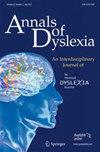The reading profiles of late elementary English learners with and without risk for dyslexia
Abstract
Abstract
Few studies have systematically investigated the reading skill profiles of English learners (ELs) in late elementary school, a critical developmental period for language and literacy and the most common grades for initial identification with specific learning disabilities (O’Connor et al., Learning Disabilities Research & Practice, 28(3), 98–112, 2013). We investigated the reading skill profiles of 331 ELs in 3rd and 4th grades, including ELs with and without risk for dyslexia due to significant deficits in word and pseudo-word reading accuracy and fluency. We utilized latent profile analysis and factor mixture modeling to investigate (1) the nature and distribution of reading skill profiles; (2) whether these profiles were associated with differences in reading comprehension growth across one academic year; and (3) the stability of reading profiles across an academic year. We selected a two-class solution (reading disabled and typically developing) based on model fit indices, theoretical considerations, pattern of results across profile-solutions and time-points, and parameterizations, making the approach stronger and more generalizable. These classes demonstrated clear, consistent differences in performance across reading component skills, with the RD class scoring consistently below the TD class across code-based and meaning-based domains of reading. Across the year, the TD class demonstrated significantly higher patterns of growth in reading comprehension (χ2 (1) = 206.21, p < 0.001). Class membership was largely stable (97% of participants maintain class membership). These results suggest that ELs with risk for dyslexia demonstrate multiple component skill deficits that may require long-term, comprehensive, intensive interventions to remediate.


 求助内容:
求助内容: 应助结果提醒方式:
应助结果提醒方式:


